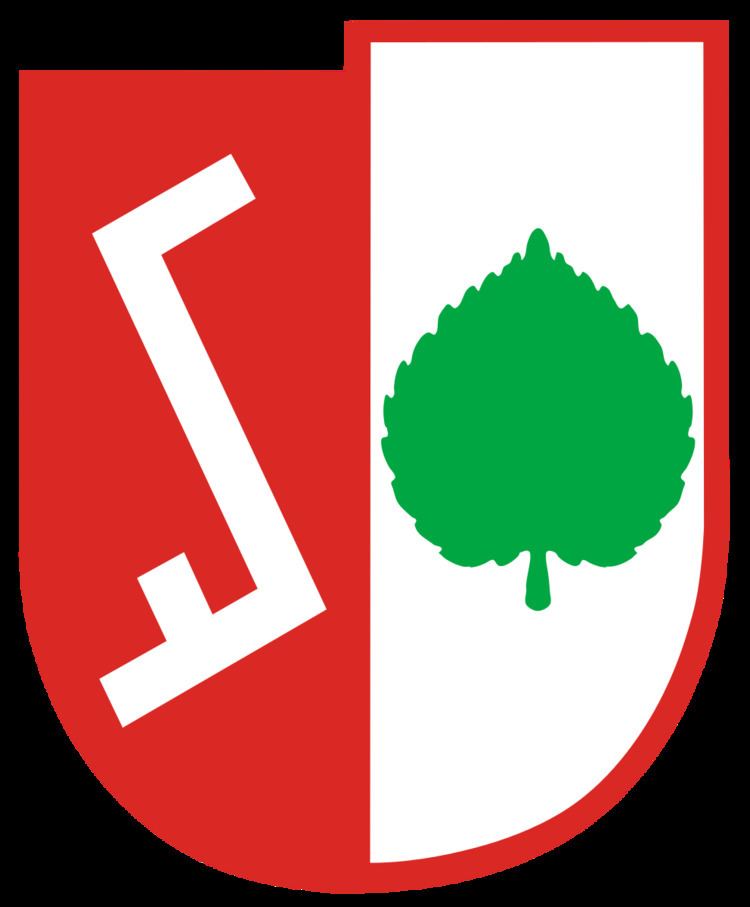 | ||
Union of Poles in Germany (Polish: Związek Polaków w Niemczech, German: Bund der Polen in Deutschland e.V.) is an organisation of the Polish minority in Germany, founded in 1922. In 1924, the union initiated collaboration between other minorities, including Sorbs, Danes, Frisians and Lithuanians, under the umbrella organization Association of National Minorities in Germany. From 1939 until 1945 the Union was outlawed in Nazi Germany. After 1945 it had lost some of its influence; in 1950 the Union of Poles in Germany split into two organizations: the Union of Poles in Germany (German: Bund der Polen in Deutschland e.V.), which refused to recognize the communist Polish government of the Polish United Workers' Party, and the Union of Poles "Zgoda" (Unity) (German: Bund der Polen "Zgoda" (Eintracht)), which did recognize the new Communist government in Warsaw and had contacts with it. The split was healed in 1991.
Contents
Early history
The union was intended to express the views of the Polish minority in Germany, This partly comprised the Polish-native population of the former East German provinces which remained with Germany under the conditions of the Treaty of Versailles (Upper Silesia, East Brandenburg, Pomerania, Warmia or areas where Poles settled in Middle Ages (East Prussia) — mostly farmers and workers — and partly the Polish immigrants in Ruhr area (see Ruhr Poles). This constituency of the Union was calculated to number approximately 1,500,000 people. Official German statistics from the mid-1920s showed approximately 200,000 persons with Polish mother tongue. Polish political parties gained between 33,000 and 101,000 votes in the legislative elections in the Weimar Republic between 1919 and 1932. However, the Polish minority was only legally recognised as such in Upper Silesia, where they possessed international status due to Treaty of Versailles. In other areas Poles had no special minority rights.
In February 1933 the Union created a central financial institution, "Bank Słowiański" (The Slavic Bank), with a professional and technical staff. This institution was one of many Polish financial and economic organisations in Germany, such as: banks of peasant farmers, cooperatives, agricultural circles and savings banks. Up to 1931, twenty-one Polish credit banks acted in Germany.
In Nazi Germany Poles faced increased problems, as the Nazis attempted to force cultural unity on the country. Poles outside of the Upper Silesia, such as Lower Silesia, were forced to declare German nationality; activists of the union were subject to persecutions. However, the union was kept legal in the hope of avoiding escalations of ethnic conflict that would create problems for the German minority in Poland (mostly in the autonomous Silesian Voivodeship, in Wielkopolska and the then Pomeranian Voivodeship, comprising parts of former West Prussia in the Polish Corridor, 1919–1939).
The leaders of the Union found it necessary to invent new symbols for the Union to avoid the possibility that Poles would adhere to the new “national” symbols, such as the Nazi salute and the swastika.
This led to invention of the symbol of the Union, the Rodło, a stylized representation of the Vistula river. The reason for its adoption was that the Polish national symbol, the White Eagle, was not allowed by Prussian law. The Nazi swastika provided a certain inspiration for the Poles's own alternative symbol that was designed to be a challenge to Nazi Germany.
It was created by the graphic designer Janina Kłopocka, who made a rough sketch of "the emblem of the Vistula river, cradle of the Polish people, and royal Kraków — the cradle of Polish culture". The white emblem was placed on a red background to emphasize the solidarity with the Polish nation and its soul.
Structure and number of members
Originally, the Union, with headquarters in Berlin (until the outbreak of World War II), was divided into four districts. In October 1923 the District V was created, with capital in Złotów (German: Flatow). It covered the area of Grenzmark Posen-West Prussia. Also, the province of Lower Silesia was in 1928 added to District I. Union of Poles in Germany According to postwar estimates based on rescued archives, in mid-1924 Union of Poles in Germany had approximately 32 000 members in all districts:
World War II and after
Even before the German invasion of Poland, leading anti-Nazi members of the Polish minority were deported to concentration camps; some were executed at the Piaśnica murder site. The Union was outlawed by the Nazi government in August, 1939.
Members of the Polish minority who held German citizenship were subject to obligatory military service in the German regular Armed Forced; those who did not, were obliged to forced labor or emigration into the Government General of occupied Poland. In 1945, most of areas populated by the Polish minorities were located inside the new post-War Polish border, the Oder-Neisse line.
After the war, many members found it difficult to be recognised as ethnic Poles by the new Communist authorities, as some - like the Kashubians (grandfather of Donald Tusk is an example) - had served as "Germans" in the German Wehrmacht. Moreover, along with most Poles, they were unsympathetic to the Communist ideology of the new government. Unlike most of Polish society, the native Poles in former German territory sometimes had no experience of a Polish state concept, other than under Communism. Some of them, who had held German citizenship prior to 1945, emigrated en masse into West Germany subsequently, during the Communist regime in the People's Republic of Poland. (As did numerous Kashubians and nearly all Lutheran Protestant, pro-Prussian Masurians of southern East Prussia.)
